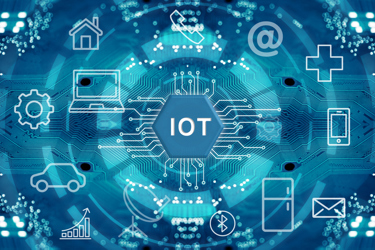How IoT Is Making Smart Retail Even Smarter
By Marc Pegulu, Semtech’s Wireless and Sensing Products Group

A 2020 National Retail Security survey conducted by the National Retail Federation and retail consulting firm, Appriss Retail, found that retail theft was at a record high before the pandemic with losses totaling nearly $62 billion in 2019, up from $51 billion the previous year. As COVID-19 restrictions begin to ease and more people return to in-store shopping, the trend has the potential to reemerge. Furthermore, as the retail industry also places a heavier focus on sustainability, big-box stores are starting to leverage the Internet of Things (IoT) solutions to not only improve retail profitability but security as well.
According to the above report, one of the top five priorities for combating increased theft and maintaining a high-quality in-store experience is investing in tools such as remote monitoring technology. Through the deployment of a low-power and long-range IoT solution, real-time merchandise monitoring technology can track assets and help stores reduce the cost of having to replace them. This is a game-changer for stores that have long struggled to effectively manage in-store goods as IoT technology provides retailers with access to large amounts of data on customer activity.
A deployment often consists of an array of sensors connected to an intelligent network, which sends information, such as location data to a gateway. Once the information is routed to the application servers for processing it is sent to an end user’s smart device or computer where they receive actionable data and real-time insights.
Below are a few examples of how retailers are leveraging IoT-enabled sensors.
A Wireless Remote Key To Unlock The Security Cabinets
The National Retail Security survey also indicates that stopping internal theft has become more of a priority for organizations over the past five years. With a wireless remote keycard, stores can assign IDs to each employee to monitor who opens or closes a lockbox and the specific time and location that it occurred. Retail analytics help employers monitor, understand, and manage associate interactions for increased in-store visibility. As retail continues to prioritize greater efficiency and end-to-end security, wireless remote keycards also offer convenience to big-box stores that have many customers. A single access key enables employees to better serve customers, reducing wait times in receiving merchandise.
Packaged Merchandise
Companies can wirelessly track data on high-cost items to alert managers when they have been removed or tampered with. Not only does this ensure accurate counts of a product, but it can improve overall customer experience to guarantee items are stocked and online listings are accurate. IoT devices featuring an on-shelf availability sensor keep sales high, ensuring empty shelves don’t cost retailers another sale. This helps workers monitor inventory and also alerts employees when they need to restock empty shelves. With the ability to monitor and manage operations through a single platform, as well as deliver actionable data and insights in real-time, IoT-enabled sensors bring simple, secure, and scalable solutions to the retail space.
Display Merchandise
Retailers put devices such as phones, tablets, wearables, and cameras on display for one reason – to entice the customer to purchase the product. For customers who want to interact with a product before purchasing, IoT-enabled tracking devices are a useful solution for retailers to track when the product was moved. These devices can wirelessly connect to the internet while offering bilateral communication, end-to-end security, mobility, and localization services. This functionality enables a higher degree of quality in-store experience because it not only enables customers to interact with display merchandise but provides valuable data to retailers, alerting them to the types of devices that receive the most interaction and for how long to identify if products are displayed in the right place. Investing in asset tracking devices also gives retailers peace of mind knowing their inventory is safe and secure, reducing theft.
With IoT-enabled sensors, business operations can continue to improve security and inventory management of assets across big-box stores as well as transform shopping into an immersive experience. According to Grand View Research, the IoT retail market is expected to grow annually at a rate of 26% from 2021 to 2028. Optimizing and automating the retail experience using IoT-enabled technologies, especially following the COVID-19 pandemic, will continue to have a profound impact on business operations as connected devices become more widely adopted by individuals and businesses.
About The Author
Marc Pegulu is vice president, LoRa and IoT product marketing and strategy in Semtech’s Wireless and Sensing Products Group.
